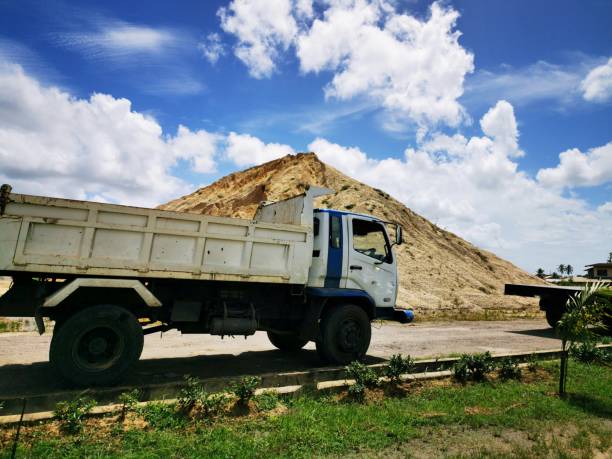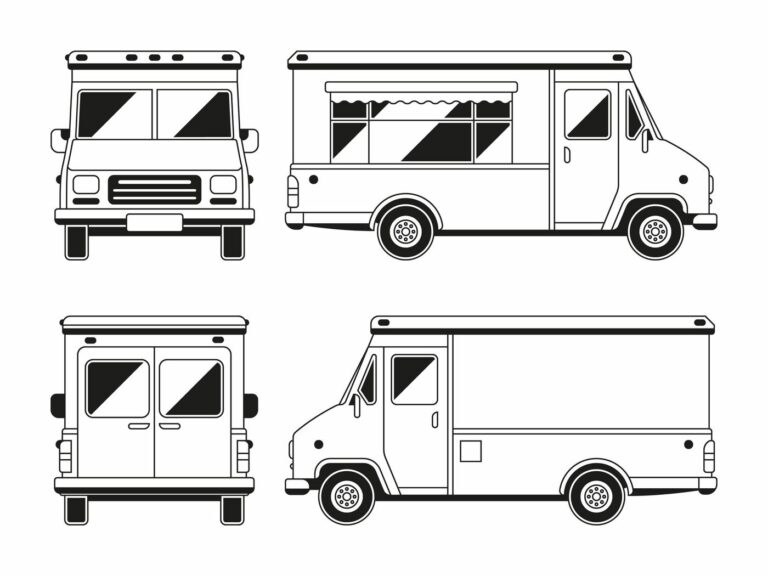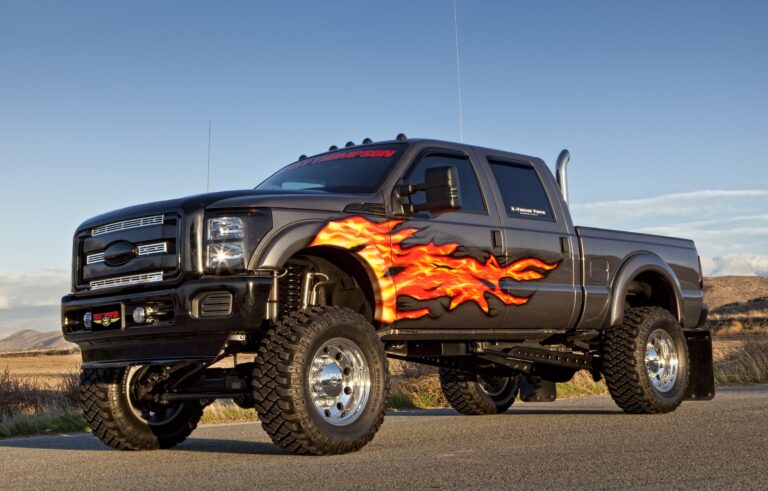How Many Yards Of Fill In A Dump Truck Bed: Your Comprehensive Guide to Estimating and Ordering Materials
How Many Yards Of Fill In A Dump Truck Bed: Your Comprehensive Guide to Estimating and Ordering Materials cars.truckstrend.com
Whether you’re embarking on a major landscaping project, laying a new foundation, or simply need to level a patch of ground, one of the most critical questions you’ll face is: "How many yards of fill do I need?" And, by extension, "How many yards of fill can a dump truck actually carry?" Getting this right is paramount. Underestimate, and your project grinds to a halt, incurring delays and potentially higher delivery fees. Overestimate, and you’re left with excess material and wasted money.
Understanding the capacity of a dump truck in cubic yards is the bedrock of efficient material ordering. This comprehensive guide will demystify dump truck capacities, explain the factors that influence them, provide practical advice for calculating your needs, and help you navigate the complexities of ordering bulk materials.
How Many Yards Of Fill In A Dump Truck Bed: Your Comprehensive Guide to Estimating and Ordering Materials
Understanding the Cubic Yard: The Foundation of Fill Measurement
Before delving into dump truck capacities, it’s essential to grasp the fundamental unit of measurement: the cubic yard. A cubic yard is a volume equivalent to a cube measuring three feet by three feet by three feet (3′ x 3′ x 3′). This means one cubic yard contains 27 cubic feet (3 x 3 x 3 = 27).
Most bulk materials like topsoil, gravel, sand, mulch, and crushed stone are sold and transported in cubic yards because it’s a consistent measure of volume, regardless of the material’s weight or density. While the weight of a cubic yard varies significantly (a cubic yard of mulch weighs far less than a cubic yard of gravel), their volumetric measurement remains the same.
Factors Influencing Dump Truck Bed Capacity
The amount of fill a dump truck can carry isn’t a fixed number. Several critical factors come into play, making it essential to understand the nuances:
-
Truck Size and Type: This is the most obvious and significant factor. Dump trucks come in various sizes, each designed for different capacities and applications.

- Single-Axle Dump Trucks (Light Duty): Often used for smaller residential projects, these trucks typically carry 5 to 7 cubic yards of material. They are more maneuverable and better suited for tight spaces.
- Tandem-Axle Dump Trucks (Standard Duty): The most common type seen on construction sites, these trucks have two axles at the rear. They can typically haul 10 to 14 cubic yards of material. This is often considered the "standard" dump truck load.
- Tri-Axle Dump Trucks (Heavy Duty): With three axles at the rear, these trucks are designed for larger loads. Their capacity ranges from 15 to 20 cubic yards.
- Semi-Dump Trucks / Tractor-Trailers (Articulated): These consist of a tractor pulling a large dump trailer. They are used for very large projects and long-distance hauling, with capacities ranging from 20 to 25+ cubic yards, sometimes even up to 30 cubic yards depending on the trailer type (e.g., end-dump, belly-dump).
- Belly-Dump / Bottom-Dump Trailers: These specialized trailers discharge material from the bottom, ideal for paving or spreading material in a linear fashion. Their capacity can be 20 to 30+ cubic yards.

-
Material Density and Weight: While a cubic yard is a volumetric measure, the weight of that cubic yard varies dramatically by material. Dump trucks have legal Gross Vehicle Weight Rating (GVWR) limits. A truck might be able to volumetrically hold 14 cubic yards, but if the material is very heavy (like wet gravel or concrete), it might reach its weight limit before it reaches its volumetric capacity.

- Light Materials: Mulch, topsoil (dry), wood chips – a truck can often be filled to its volumetric capacity.
- Medium Materials: Dry sand, light gravel – usually filled close to volumetric capacity.
- Heavy Materials: Wet sand, crushed concrete, dense aggregates, fill dirt (especially wet) – a truck may "cube out" (reach its weight limit) before it "fills out" (reaches its volumetric capacity). For example, a truck rated for 14 cubic yards of gravel might only be able to carry 10-12 cubic yards of wet clay due to weight restrictions.
-
Legal Load Limits and Regulations: Federal, state, and local regulations dictate the maximum weight a commercial vehicle can carry on public roads. These regulations are based on axle weight limits, gross vehicle weight, and bridge formulas. Reputable material suppliers and haulers strictly adhere to these limits to ensure safety and avoid hefty fines. This often means a truck might carry slightly less than its theoretical maximum volumetric capacity if the material is particularly heavy.
-
"Heaped" vs. "Struck" Capacity:
- Struck Capacity: This refers to the volume of the truck bed if the material were perfectly level with the top of the bed.
- Heaped Capacity: This includes the material piled above the sides of the truck bed, forming a "heaped" load. Most common dump truck capacities quoted are "heaped" capacities, assuming a safe, stable pile.
Common Dump Truck Capacities at a Glance
To provide a quick reference, here’s a general overview of common capacities for different dump truck types, assuming average-density materials:
- Small (Single Axle): 5-7 cubic yards
- Standard (Tandem Axle): 10-14 cubic yards
- Large (Tri-Axle): 15-20 cubic yards
- Semi-Dump / Transfer Trailer: 20-30+ cubic yards
Always confirm the specific capacity with your material supplier or hauler, as their fleet’s specifications may vary.
Calculating Your Material Needs: A Practical Guide
Before you even think about ordering a truck, you need to know how much material you need.
-
Measure Your Area:
- Length (feet) x Width (feet) x Depth (feet) = Total Cubic Feet
- For example, a patio area 20 feet long by 10 feet wide, needing 6 inches (0.5 feet) of gravel:
- 20 ft x 10 ft x 0.5 ft = 100 cubic feet
-
Convert Cubic Feet to Cubic Yards:
- Since 1 cubic yard = 27 cubic feet, divide your total cubic feet by 27.
- 100 cubic feet / 27 = 3.7 cubic yards
-
Account for Compaction and Waste:
- Materials like gravel, sand, and dirt will compact once spread and vibrated. It’s wise to add an extra 10-20% to your calculated amount to account for this and any minor spillage or irregularities.
- For our example: 3.7 cubic yards + 15% (0.555) = 4.255 cubic yards. Always round up! So, you’d order 4.5 or 5 cubic yards.
Tips for Ordering and Receiving Materials
- Communicate Clearly: When ordering, tell the supplier the type of material, the quantity you need in cubic yards, and the type of project you’re doing. This helps them determine the best truck for your needs.
- Know Your Access: Inform the driver about any obstacles, narrow driveways, overhead wires, or soft ground. A large tri-axle or semi-dump truck might not fit where a tandem axle can.
- Prepare the Drop-Off Zone: Ensure the area where the material will be dumped is clear of debris, vehicles, and anything that could be damaged. Lay down a tarp if you want to protect the surface or make cleanup easier.
- Be Present for Delivery: It’s always best to be on-site when the truck arrives to direct the driver and confirm the delivery.
- Understand Material Variations: Be aware that "topsoil" can vary greatly in quality and composition from one supplier to another. If specific properties are critical, ask for samples or detailed descriptions.
Challenges and Solutions
- Overloading: Not only illegal and dangerous, but it can also damage the truck and the road. Reputable companies will not overload.
- Under-ordering: Leads to project delays and additional delivery fees for a small top-up load.
- Material Spillage: Can occur if a truck is overloaded or during transit on rough roads. Ensure the load is covered if required by regulations or if the material is fine and prone to blowing away.
- Access Issues: Large trucks require ample space to maneuver and dump. If your site has limited access, you might need to order multiple smaller loads or consider alternative delivery methods (e.g., conveyor delivery, wheelbarrowing from a roadside drop).
Solution: Thorough planning, accurate measurement, clear communication with your supplier, and understanding the limitations of the delivery vehicle are your best defenses against these challenges. When in doubt, always consult with your material supplier or a local contractor.
Estimated Price Table: How Many Yards of Fill in a Dump Truck Bed
Pricing for bulk materials and delivery varies significantly based on your geographic location, supplier, material quality, and current market demand. The table below provides estimated ranges to give you a general idea. Always obtain a specific quote from your local supplier.
| Material Type | Estimated Price Per Cubic Yard (Delivered) | Common Dump Truck Size | Estimated Price Per Truckload (Delivered) | Notes |
|---|---|---|---|---|
| Topsoil (Basic) | $30 – $60 | Tandem (10-14 yd) | $300 – $840 | Price varies greatly by quality (screened, unscreened, organic content). |
| Topsoil (Premium) | $60 – $100 | Tandem (10-14 yd) | $600 – $1,400 | Enhanced with compost/nutrients. |
| Gravel / Crushed Stone | $40 – $75 | Tandem (10-14 yd) | $400 – $1,050 | Varies by size, type (limestone, granite, recycled concrete). Heavier materials might mean fewer yards. |
| Sand (Masonry/Play) | $45 – $80 | Tandem (10-14 yd) | $450 – $1,120 | Price varies by fineness and cleanliness. Wet sand is significantly heavier. |
| Mulch (Basic Wood) | $25 – $50 | Tandem (10-14 yd) | $250 – $700 | Often sold by the cubic yard. Lighter, so trucks can typically carry full volumetric capacity. |
| Fill Dirt (Unscreened) | $20 – $40 | Tandem (10-14 yd) | $200 – $560 | Cheapest option, often contains rocks, roots, debris. Price depends heavily on local availability. |
Disclaimer: These prices are estimates only and can fluctuate widely based on your location, supplier, fuel costs, and material availability. Delivery fees are often included in the per-yard price for bulk orders but can also be an additional flat fee per trip.
Frequently Asked Questions (FAQ)
Q1: Is a yard of dirt the same as a yard of gravel?
A1: Volumetrically, yes – both occupy 27 cubic feet. However, their weight is vastly different. A cubic yard of dry topsoil might weigh around 2,000-2,400 lbs (1-1.2 tons), while a cubic yard of gravel can weigh 2,800-3,200 lbs (1.4-1.6 tons) or more, especially when wet. This weight difference is crucial for truck capacity and legal limits.
Q2: How do I know what size dump truck I need?
A2: First, calculate your total material needs in cubic yards. Then, consider your site access. If you need 10-14 cubic yards and have good access, a standard tandem-axle truck is likely sufficient. For larger projects (20+ yards) with excellent access, a tri-axle or semi-dump might be more cost-effective per yard, as it reduces the number of trips. For very small loads (under 10 yards), you might consider a local landscape supply that offers smaller truck deliveries or even picking up with a utility trailer if feasible.
Q3: Can I mix different materials in one dump truck load?
A3: Generally, no. Dump trucks are designed to haul one type of bulk material per load. Mixing materials would make separation at your site impossible and could contaminate the supplier’s remaining stock if they collect unused material. Order separate loads for different materials.
Q4: What’s the difference between a cubic yard and a ton?
A4: A cubic yard is a measure of volume (3D space). A ton is a measure of weight (2,000 pounds). Materials like gravel, sand, and asphalt are often sold by the ton because their weight is more consistent than their volume (e.g., wet vs. dry). Lighter materials like mulch and topsoil are typically sold by the cubic yard.
Q5: How much does a cubic yard of common materials weigh?
A5:
- Topsoil (dry): ~2,000 – 2,400 lbs (1.0 – 1.2 tons)
- Gravel/Crushed Stone: ~2,800 – 3,200 lbs (1.4 – 1.6 tons)
- Sand (dry): ~2,700 – 3,000 lbs (1.35 – 1.5 tons)
- Mulch: ~400 – 800 lbs (0.2 – 0.4 tons)
- Fill Dirt (wet/dense): Can exceed 3,000 lbs (1.5 tons)
Conclusion
Understanding "how many yards of fill in a dump truck bed" is more than just knowing a number; it’s about appreciating the interplay of truck size, material properties, and legal constraints. By accurately calculating your material needs, factoring in the various capacities of different dump trucks, and communicating effectively with your supplier, you can ensure your project proceeds smoothly, efficiently, and within budget. Always remember to round up your estimates and confirm specifics with your chosen supplier to guarantee a successful delivery and a well-executed project.






